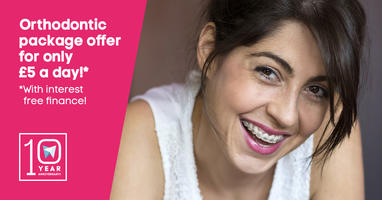What is a removable brace? What is an aligner? How are they different form traditional braces, and with all of these braces to choose from, what is a traditional brace anyway? If these questions have been keeping you awake at night fear not! This article will be your knight in shining armour, here to slay the dragon of confusion by easily categorising orthodontic braces into three main types, based on how they stick in the mouth. Are we ready? Here goes!

Fixed orthodontic braces
These are the kind of braces that cannot be removed, and are on your teeth. There are some that go in the lingual side of the teeth, and are thus invisible, but most go on the buccal, front side of your face, and can be seen, at least somewhat.
Benefits: The quickest and most effective type of treatment. This is the only category of treatment that can handle any and all malocclusions and defects, even the really serious ones.
Drawbacks: The least hygienic of all types, this kind of brace puts you at a heightened risk of tooth decay. These are constantly on the teeth, which means there is a heightened risk of demineralisation. These are also the least aesthetic of all, although with sapphire brackets or tooth coloured porcelain brackets they are nearly invisible.
Removable orthodontics
These are usually an archwire that is bent into shape and must be worn for most of the day. They can be removed whilst eating or speaking, and are thus very popular among adult patients waiting for orthodontic treatment.
Benefits: These kinds of braces are removable, and thus more hygienic, as you can take them out when you eat, rinse your mouth out, and put them back on. They are also aesthetically pleasing, because you can take them out.
Drawbacks: These are by far the slowest kind of orthodontic solution, the one that takes the most time. Because it is removable, patients tend to lose them or misplace them, and tend to take them out all the time, further slowing down treatment times. These braces can only be used to combat certain kinds of malocclusion, and are ineffective at many kinds of malocclusions.

Clear aligners
Clear aligners are removable, look like tooth guards but are transparent, and must be worn at least 22 hours a day. They are a bit pricey, and come in a special case. These are also very hygienic, and are made of a special plastic. At each orthodontic session, you get a new one, and each aligner is a little bit different form the previous one, thus gently guiding your teeth into the desired position.
Benefits: The most aesthetically pleasing option, as they can be taken out, but are hard to spot even when on the teeth. Super hygienic as it protects the teeth, but you can take it out before eating, rinse your mouth and wear them again. Uses only gentle forces to guide the teeth, and is thus the most agreeable and comfortable with patients.
Drawbacks: Just as with removable braces of any variety, patients losing them and misplacing them is a factor that must be calculated with. Treatment times are longer than for fixed orthodontics, especially for patients who do not really wear them as often as they should. This is by far the most expensive form of orthodontic treatment, as the materials used are very special, and making the aligners costs more.

